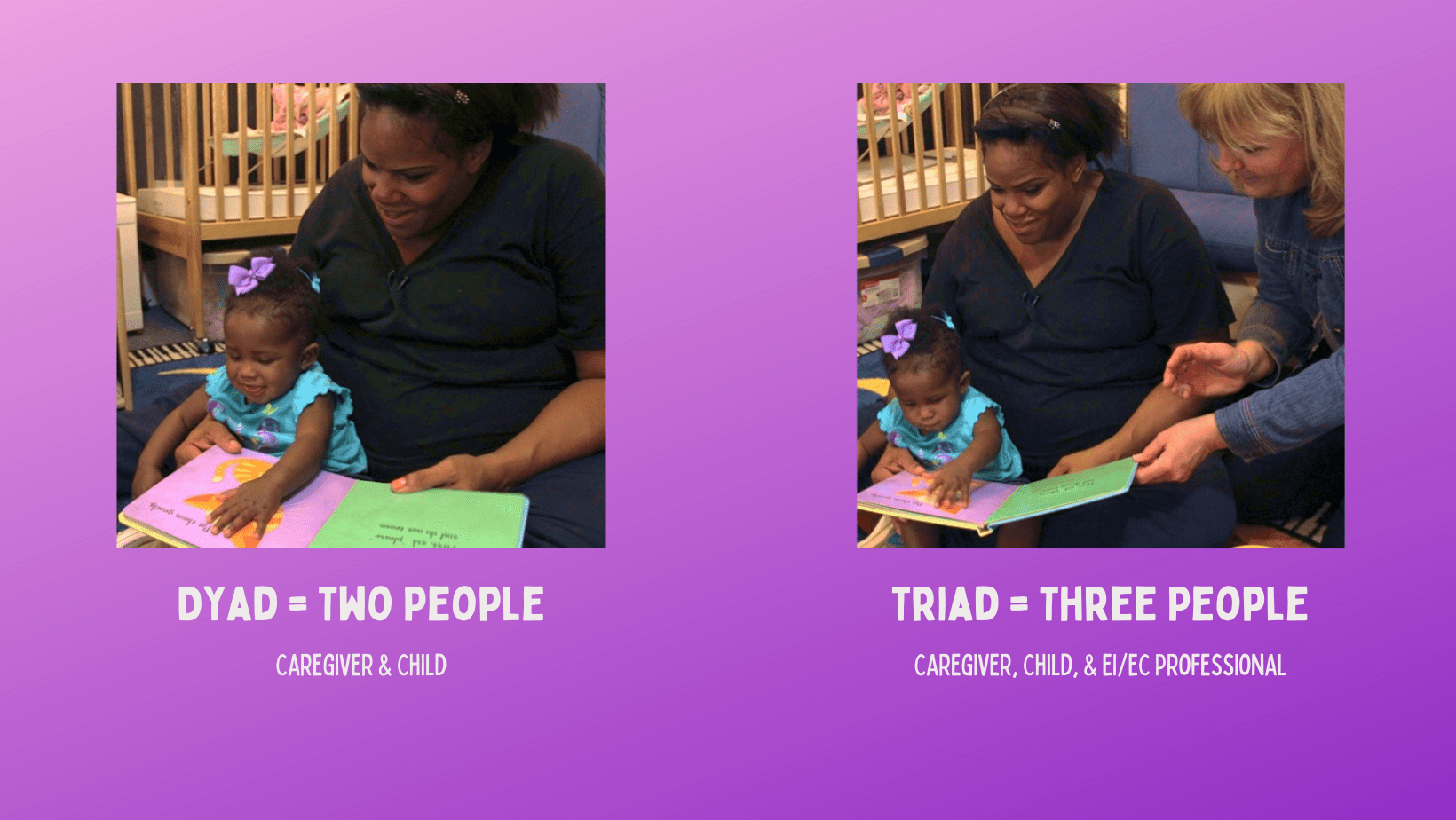by Tweety Yates, Ph.D.
In our recent webinar “Strategies for Supporting Caregiver-Child Interactions That Enhance Development,” we:
- Discussed the importance of interactions aimed at supporting and enhancing the role of caregivers as competent and confident supporters of children’s development
- Thought about things that can influence interactions such as life conditions, knowledge of child development, temperament, “hot buttons,” and previous history of interactions
- Reflected on our interactions and how we could be more intentional about promoting competence and confidence by using triadic strategies
To understand and use triadic strategies, we need to define two terms: Dyad and Triad.

Triadic strategies are used by YOU, the EI/EC professional, to support and enhance caregivers’ capacity to create positive, sensitive, and engaging interactions that support children’s development. A few examples of each of the six triadic strategies are provided below:
Establish Dyadic Context: Create dyadic activities, such as peek a boo, to increase the chances that playful interactions will occur.
Affirm Parenting Competence: Support the caregiver’s competence and confidence by warmly recognizing and expanding on the caregiver’s use of developmentally supportive interactions with their child or children. For example, if the caregiver is singing a song with the child and the child expresses joy with the interaction, you might point out to the caregiver how much the child is enjoying the play and comment on the ways the play is supporting the child’s development.
Focus Attention: Focus a caregiver’s attention on the child by commenting on or questioning something the child is doing. For example, a caregiver is on the phone and you see child trying to put a key in the lock. You might say, “Sue, look at Kayley trying to put the key in the lock! She is really trying to figure out how that key fits in the lock. Have you seen her do that before?” By commenting, the caregiver’s attention is now focused back on the child.
Provide Developmental Information: Provide information to the caregiver about the child’s development by verbally labeling or interpreting the child’s social-emotional, cognitive, language, and motor abilities as they are playing and interacting. For example, a caregiver is playing a turn-taking game with the baby. When the caregiver stops playing the game you say, “Look how she is moving her legs and arms. She is communicating that she wants to do it again!”
Model: Model a strategy, idea, or skill by momentarily taking on the role of the caregiver with the child. For example, you might be demonstrating a technique for helping a child sit with support. As soon as you demonstrate the strategy, ask the caregiver to come give it a try. The word momentarily is very important here because you do not want to take over the primary role of the caregiver with the child (dyad). You demonstrate the strategy and then immediately have the caregiver try it with the child.
Suggest: Give the caregiver a specific suggestion as to what to do with the child. For example, you might say, “I wonder what would happen if you tried rolling the ball to Joey and say, ‘My turn! Your turn! Roll it back to me.’ What do you think he will do? Try it and let’s watch and see.”
For additional information and examples of the triadic strategies, you can download this handout, as well as, this one. If you missed our first webinar in April 2021, the recording is available at the webinar event page.
In the webinar,“Ideas for Implementing Triadic Strategies: Putting It Into Action!,” we provide many examples, ideas, and resources for putting the triadic strategies into action across settings and age groups.
Images used with permission, T. Yates














